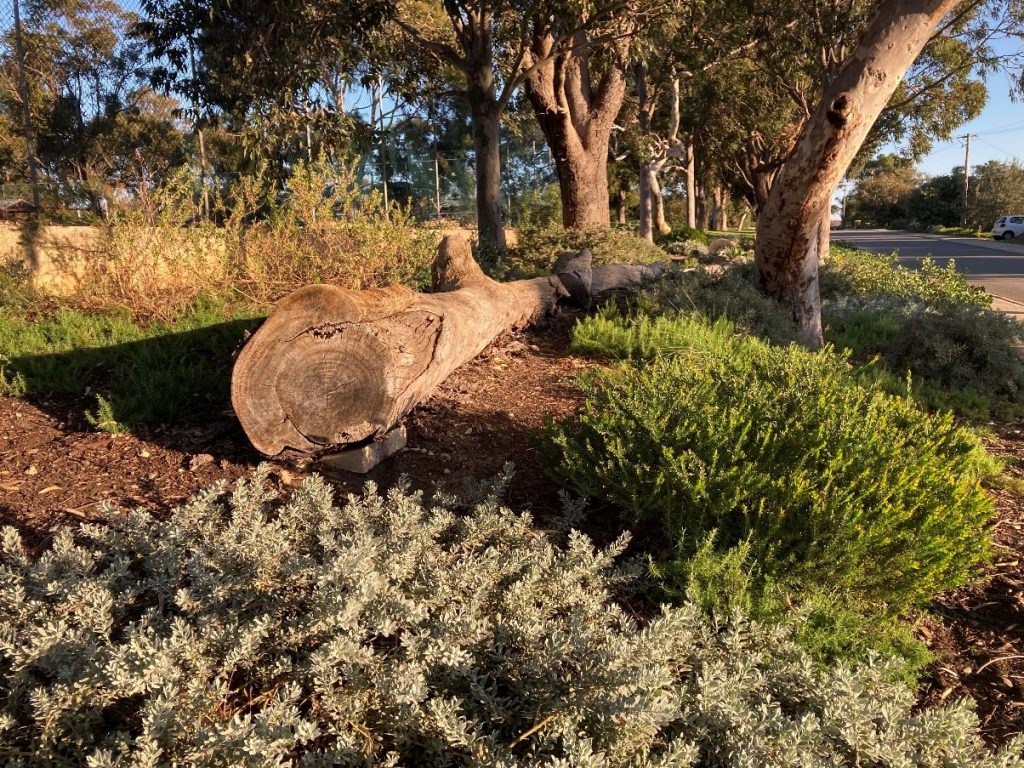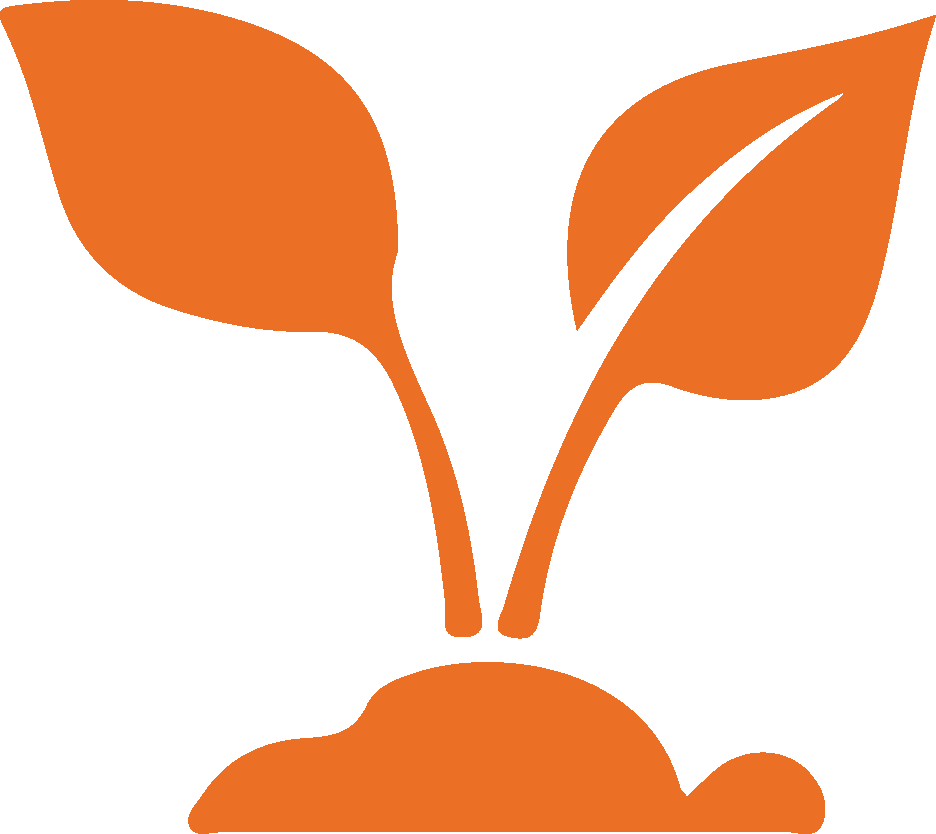Listening to the sounds of the different birds in my native verge out the front, gives me some sense of calm that I’m providing a place of refuge and habitat for the local native birds. In the distance I can hear a dove and the ‘caw’ of the ravens that used to dominate our street. Since planting a Coral Gum E. Torquata and E. victrix in my verge with some groundcover plants, we now get a much greater diversity of birds and the morning song is lovely—we get the Wadowadong (Grey Butcher Bird), Wodjalok (Red Wattle Bird), Bandin (honeyeaters), Dowarn (Australian Ringneck—subs-species known as the twenty eight), Dilabot (magpie-lark), Koorbat (magpies), lorikeets (eastern states) and Djitidjiti (Willie wagtails).
The other day as I arrived home, I saw a Dilabot diving and catching a legless lizard from my verge. This is a space that only 7 years ago was a piece of compacted, barren couch grassland.

What is biodiversity and how can we help?
What is biodiversity? This is the definition given by the Australian Museum: Biodiversity comes from two words Bio meaning life and diversity meaning variability. Biodiversity is the variety of all living things; the different plants, animals and micro-organisms, the genetic information they contain and the ecosystems they form.
The South West of WA has been recognised internationally as having some of the most biodiverse ecosystems in the world (along with those other ecosystems such as the Amazon). We have a huge range of species that exist per unit area of land, particularly in the some of the national parks around Perth.
When we talk about improving biodiversity, it feels like we’re talking about something ‘out there’, something looked after by the government and out of our reach in our urban landscape. Although we do need large, interconnected areas of bushland as well, we can also really make a difference at a local level.
Biodiversity is not just about helping our environment, it’s about helping ourselves
We can support the local birds, insects and reptiles that used to roam (and still do in some areas) across the Swan Coastal Plain by making small improvements in our own spaces.
Not only does this help our environment, it is necessary for our own health—we are intrinsically part of our environment. It’s also been found that supporting nature helps our mental and physical health—this link does give a good overview of the benefits of urban greening and it’s not just about the amount of green space, people get most benefit from more diverse green spaces, rather than just a green lawn (read more at this New Scientist article).
9 simple things we can do:
1. Plant local plants—The relationship between local plant species (flora) and local animal species (fauna) is immense and poorly understood. Timing is everything in the flora / fauna relationship that we often refer to as ecology. Insect life cycles, for example, matched to the seasonal cycle of local plants flowering, producing nectar and pollen before seeding is a delicate and intricate process that helps to drive the continued existence of both local plants and animals. Many cultivars and eastern states natives fail in this area simply because they have not evolved here with the corresponding localised fauna (see this link for help finding native species in your own garden). See this article about planting a local verge.
Always choose local species for biodiversity and ecological function.
2. Plant a tree—the biggest, local tree you can fit in your verge or garden. Sometimes trees get a bad name—but often it is because the wrong species has been planted in the wrong space. Tuarts (Eucalyptus gomphocephala) were once common across areas of the Swan Coastal Plain. They provide a habitat for a huge amount of animals and also great shade and because they are a local tree they do not drop limbs the way some species (e.g. a lemon scented gum from the eastern states might do). They are also a great looking tree.
3. Bring in some logs and a few small rocks into your garden—they provide much needed habitat for small lizards, and insects. Bird boxes, bat box (see this article on how to make one by Gardening Australia). To learn more about the local wildlife you could book a tour with Kanyana Wildlife in the Perth Hills or visit many of other amazing organisation working to improve biodiversity around Perth (e.g., Bibra Lake Wetlands Centre) or Karakamia Sanctuary in Chidlow.

4. If you do need a section of lawn, do not plant Couch Grass (even if it is said to be drought tolerant). It is a very tough, from Africa, and very difficult to remove and competes against establishing native plants. Talk to lawn specialists and choose a buffalo or other variety that has surface stolons (as opposed to the 50+ cm deep roots that couch has)—it will be much easier to remove later as well (without chemical use) if you change your mind.
5. If you’ve decided you need to use chemicals for weeds—for example to remove Couch, we recommend seeking professional advice and using it as part of an integrated pest management approach. For example, making the environment less hospitable for the weed/pest by adding a tree, introducing native plants. Contact APACE as we can help you with practical advice in this area to achieve the best outcome with minimal chemical use.
6. Ants and other insects and spiders are important part of our ecosystem. We sometimes find them pests if they become dominant in numbers, which can happen in artificial environments (paving, concrete). We recommend reducing paved areas, increasing shaded areas, vegetation and trees to bring about a balanced ecosystem. Avoid use of sprays wherever you can because they impact on our native bees and other insects that are key in the ecosystem that supports us.
7. Cats—if you’re considering getting a cat, make sure you consider how you are going to house it overnight—as roaming cats are known to cause a massive impact on the local marsupials, lizards and birdlife. Here is a factsheet from Birdlife Australia.
8. Avoid artificial turf—it is hot, plastic and does nothing for biodiversity. Understandably, there is sometimes a need for a low maintenance, minimalistic solutions. Other better and cooler alternatives:
- consider stone (Rainbow stone)
- compacted gravel or limestone
- hard wood woodchip
- And shade the area using trees/shade cloth
9. Find yourself a seat in the shade under a tree and listen to the wind, the birds and learn. Here is a story of the New Holland honeyeater by Neville Collard, which explains the importance of these birds in our local environment, they live on the nectar of plants as well as insects and they assist with germination of plants. There are some different sub-species of honeyeater that you might be able to spot as well with different markings. These are two other great resources on birds: Friends of Queens Park Bushland and the Birdlife Australia website. There is the great Aussie Backyard Bird Count from 18–24 October that Birdlife Australia would really like you to be part of.
The best time to plant is in May, early winter so plants have time to establish over the winter period and when it warms up they are settled and ready to grow! Once you have a tree, a few shrubs, you can start to add to the mix you have each year and gradually develop your own little biodiverse ecosystem, at which point it’s time to talk to your neighbour and share some insights and help them make a start as well.
Written by Michelle Donnelly

